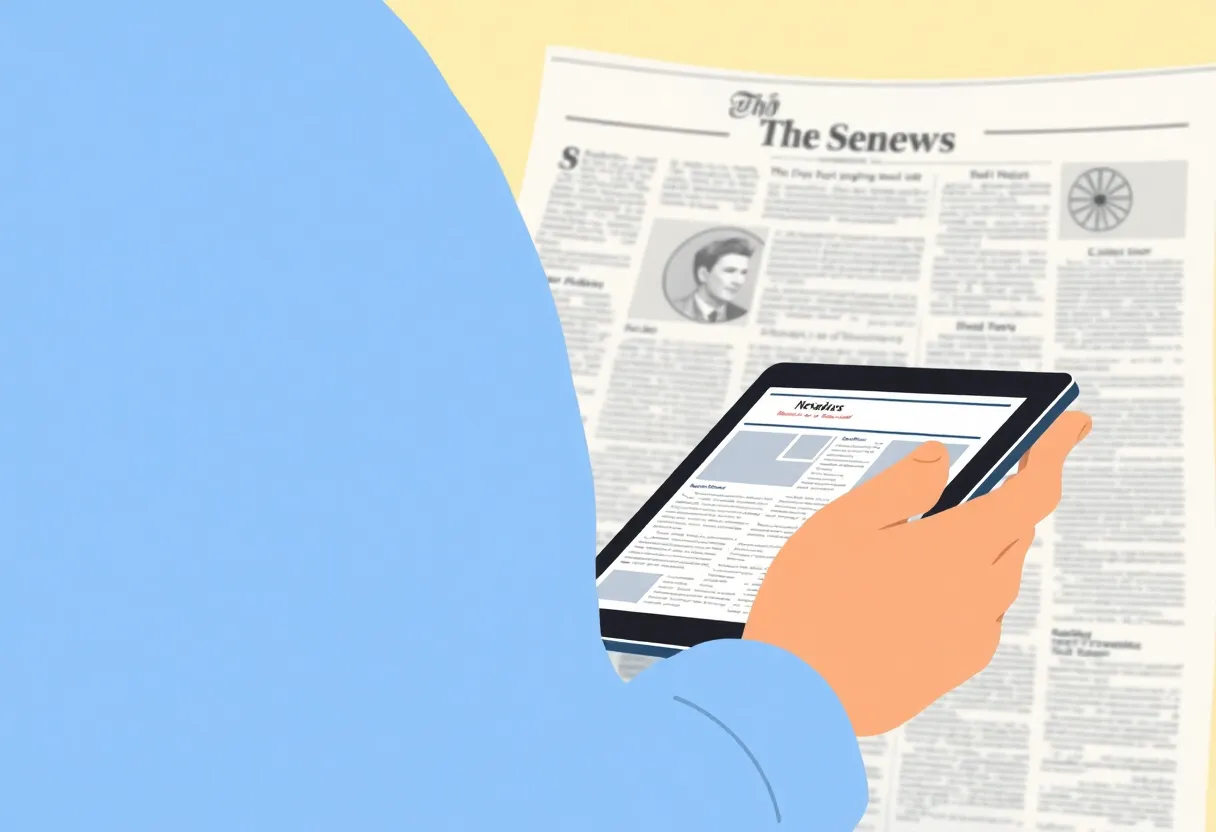Omaha, October 3, 2025
Omaha and Lincoln newspapers will cease daily print editions from November 3, prioritizing digital delivery. This change responds to declining readership and rising costs. Community concerns arise over seniors’ access to online news. Local officials are considering support measures while newspapers focus on enhancing digital platforms to sustain comprehensive reporting without diminishing quality.
Omaha Newspapers to End Daily Print Editions Amid Digital Shift
Omaha, NE – Major local newspapers in Omaha and Lincoln are set to discontinue their daily print editions starting November 3, marking a pivotal change in how residents will access news in the region. This decision affects the primary daily publications serving the area, transitioning them from seven-day-a-week printing to a more limited schedule focused on digital delivery.
The shift comes as print readership continues to decline sharply, coupled with escalating production and distribution costs that have strained operations. Leaders at the newspapers emphasized that redirecting resources toward online platforms will better align with evolving consumer habits, where a growing number of readers prefer mobile and web-based news consumption over physical copies. This move is expected to streamline expenses while maintaining the depth and breadth of reporting available through digital channels.
Implementation of the change will impact delivery routes across Omaha and Lincoln, potentially disrupting long-established routines for subscribers who rely on doorstep newspapers. Staff roles may also face adjustments, though assurances have been made that overall news coverage will not diminish but instead expand in accessibility via apps, websites, and email newsletters. The transition aims to enhance user experience with faster updates and interactive features not feasible in print.
Local Concerns and Community Responses
Community members, particularly older adults who may lack easy access to digital devices or reliable internet, have voiced worries about the reduced availability of physical newspapers. This demographic often prefers tangible formats for reading local stories, weather updates, and classifieds. In response, discussions have emerged among city officials and community groups about potential support measures, such as subsidized digital access programs or limited print distributions at public locations like libraries and senior centers.
These concerns highlight broader challenges in media adaptation, where balancing tradition with innovation is key. While younger audiences embrace the convenience of instant notifications and searchable archives, ensuring equitable access remains a priority for sustaining informed communities.
Background on the Decision
The announcement reflects a nationwide trend in the newspaper industry, where many outlets have scaled back or eliminated print runs to survive financial pressures. In Nebraska, this follows years of gradual reductions in print frequency, driven by advertising revenue migrating online and circulation numbers dropping due to competition from social media and news aggregators.
Historically, daily print editions have been a cornerstone of local journalism in Omaha since the late 19th century, providing in-depth coverage of regional events, politics, and sports. The upcoming change, effective November 3, underscores the urgency of digital transformation to keep pace with technological advancements. Newspapers plan to invest savings from print operations into enhancing digital infrastructure, including improved mobile optimization and data analytics to personalize content for users.
Despite the shift, core journalistic standards will persist, with reporters continuing to cover essential topics like local government, education, and business developments. The focus on digital will also allow for multimedia integrations, such as videos and podcasts, enriching the storytelling process.
Implications for Readers and the Media Landscape
For subscribers, the change means adapting to new habits, possibly signing up for e-editions or downloading apps to stay connected. While some may lament the loss of the newspaper ritual—flipping pages over morning coffee—others see it as an opportunity for more timely and eco-friendly news delivery. Reduced paper usage aligns with sustainability goals, cutting down on environmental impact from printing and transportation.
On a larger scale, this decision could influence how other regional publications approach their operations, potentially accelerating a shift toward hybrid models. It also prompts questions about media literacy and the digital divide, emphasizing the need for community education on navigating online news safely amid misinformation risks.
As November 3 approaches, residents are encouraged to explore digital options early to ensure uninterrupted access to trusted local reporting. This evolution in Omaha’s media scene illustrates the ongoing reinvention of journalism in the digital age, prioritizing reach and relevance for future generations.
(Word count: 612)
Frequently Asked Questions (FAQ)
What is changing for local newspapers in Omaha?
Major local newspapers in Omaha and Lincoln are set to discontinue their daily print editions starting November 3, transitioning from seven-day-a-week printing to a more limited schedule focused on digital delivery.
Why are the print editions being stopped?
The decision is driven by declining print readership and rising costs, aiming to focus resources on digital platforms to adapt to modern news consumption habits.
How will this affect delivery and staff?
The move affects delivery routes and staff, with assurances that coverage will remain comprehensive online.
What concerns have been raised about this change?
Local leaders have expressed concern over reduced access for seniors, prompting discussions on subsidies.
Key Features of the Print to Digital Transition
| Feature | Description |
|---|---|
| Start Date | November 3 |
| Reason for Change | Declining print readership and rising costs |
| Resource Focus | Digital platforms for modern consumption habits |
| Impacts | Delivery routes, staff adjustments, and online coverage |
| Community Concerns | Reduced access for seniors, with talks of subsidies |
Deeper Dive: News & Info About This Topic
HERE Resources
Omaha World-Herald Cuts Print Editions to Five Days a Week





